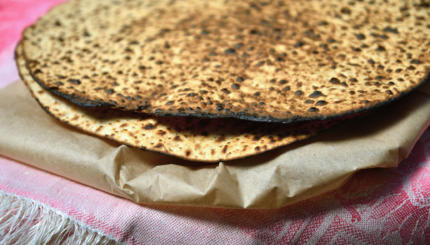The Torah places great stress on the fact that Passover occurs in the spring. In biblical times, the month in which the holiday fell was called Aviv (spring). During the first exile in Babylon, the months were given Babylonian names. Passover’s month was renamed Nisan. Although the name shifted, the Hebrews upheld the Torah’s insistence on the link of spring and Passover.
Critical scholars believe that the date connects spring festivals (the Feast of Unleavened Bread from pastoral roots and the Paschal lamb from shepherd traditions) that were absorbed into the Passover holiday. In this view, the earlier ritual elements were incorporated and reinterpreted as historical reminders of redemption. Many traditional scholars have objected to any attempt to place the Torah in a cultural context. Some, such as Maimonides, have seen no religious objection to having the Sinaitic revelation transform earlier elements into the Torah’s theological/historical pattern, as long as its divinity is upheld.
The Torah stresses both the agricultural and the historical aspects of Passover. There is a strong but subtle relationship of nature and history in the Bible’s teachings. The human being is a body/soul fusion. Somatic states affect the mind just as strong emotions–jealousy, anger, lust–rack the body. Because the spiritual and the biological are intertwined, shifts in one dimension translate into shifts in the other. The reward of righteousness is long life; living in harmony with the divine blessing yields prosperity and fertility. Moral evil pollutes the land; cruelty to other humans drives away the Divine. The fullest spiritual development will take place when the people feel secure and rooted in the land. In the messianic age, when humans will “know” God, people will dwell under their own trees and vines in peace and harmony.
Thus, in the Bible, human and natural phenomena are read at two levels simultaneously. The Hebrew Scriptures are this-worldly. Nature is true substance; the world of biological phenomena is not illusion. Yet, while these phenomena are real, they also reflect the divine realm, which transcends nature. The people of Israel are at once a human family with self-interests, sibling rivalries, and daily cares, and also witnesses of Divine Presence in the world. The land of Israel is at once a land of milk and honey, of rain and mountain springs, and the land on which God keeps a divine eye from year’s beginning to year’s end.
With your help, My Jewish Learning can provide endless opportunities for learning, connection and discovery.
Biblical language and symbol point to spring as the proper season for deliverance. The rebirth of earth after winter is nature’s indication that life overcomes death: spring is nature’s analogue to redemption. Life blossoming, breaking winter’s death grip, gives great credence to the human yearning forliberation.
A correct reading of the spring season would hear its message of breaking out and life reborn at the biological level simultaneously with an Exodus message of good overcoming evil, of love overpowering death, of freedom and redemption. The Bible envisions a world in which moral and physical states coincide, when nature and history, in harmony, confirm the triumph of life. The Exodus paradigm suggests that the outcome of history will be an eternal spring. Read with a historical/theological hermeneutic, spring is Exodus.
Reprinted with permission of the author from The Jewish Way: Living the Holiday
Torah
Pronunced: TORE-uh, Origin: Hebrew, the Five Books of Moses.


